When it comes to overland gear, North America has been playing catchup for the last decade. The trickle of products started with a few rooftop tents, followed by fridge/freezers, a torrent of off-road trailers, and finally a few innovative pop-top truck shells. All of this culminated into a pretty healthy menu of four-wheel drive fare, but there’s still one segment that leaves much to be desired, and that’s camper conversions. To be clear, I’m talking about the beautiful European-style overland trucks we see photos of on the Internet. The custom camper cabs grafted to 70 Series Land Cruisers, Land Rover Defenders, G-Wagens, and a range of other four-wheel drives.
Many of us have dreamed of owning one of these trucks but had all but given up on ever having one. Well, I have good news, the time has finally come. An experienced German manufacturer called Maltec has decided to open up operations right here in the United States, and they’ll be doing far more than just selling completed trucks—they’re converting US four-wheel drives into world travel platforms. After seeing some examples of their work at Overland Expo East last year, we decided to evaluate their vehicles in greater detail on the trails of Northern Oregon.
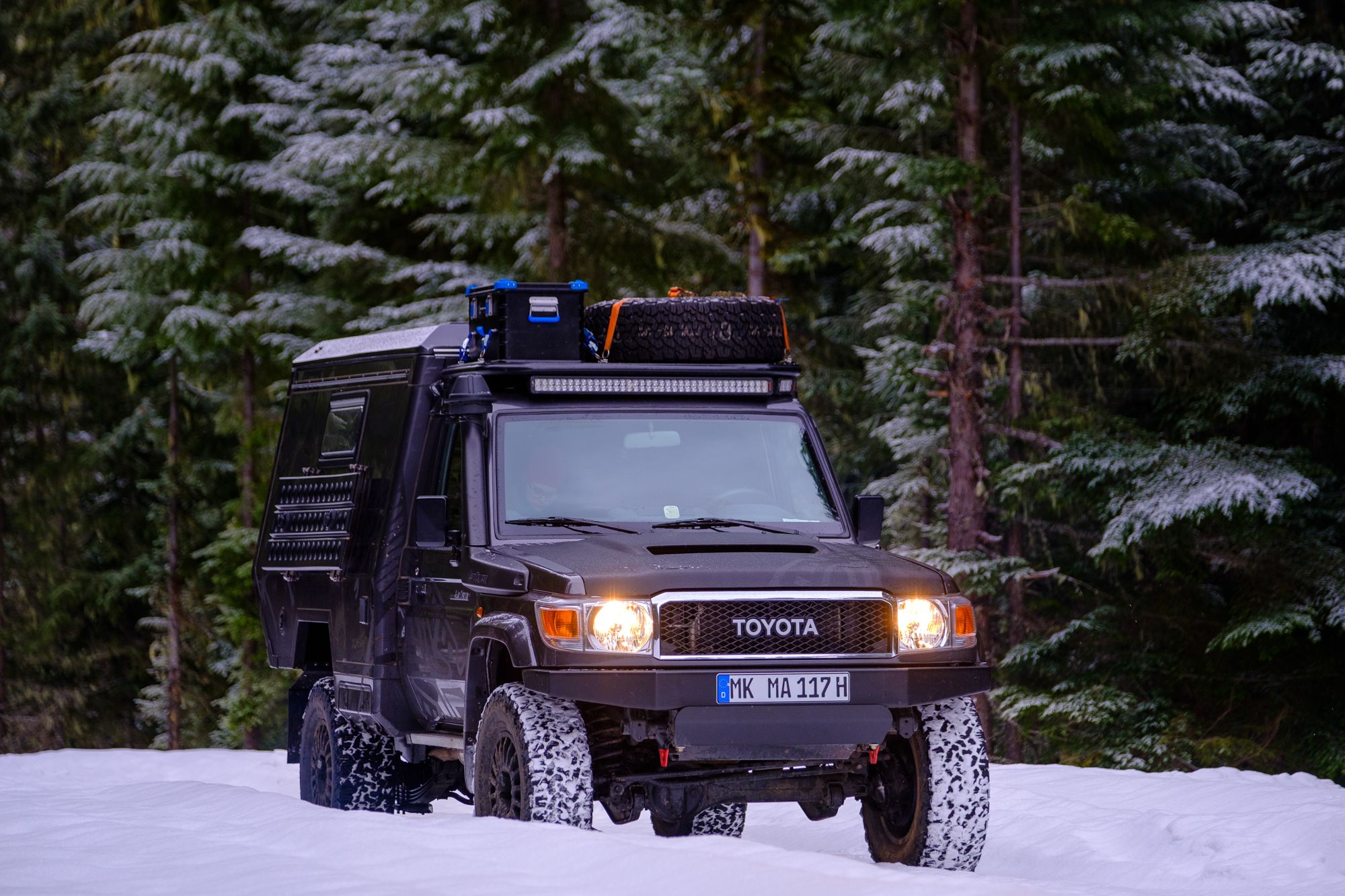
Who is Maltec?
Maltec got its start building off-road rally trucks back in 2007. At the time, their two-man team was doing specialty orders for a small group of clients, but when one of their customers ordered a support truck with living quarters built in, the whole game changed. It needed to have all the creature comforts you’d find in an RV, all the capability of a proper 4×4, and still be light enough to run the dunes of the Moroccan desert.
Their solution was a custom 79 Series pickup with a lightweight shell, and requests for similar trucks came flooding in. Before long, their rally car business was waning, and their overland camper business was born.
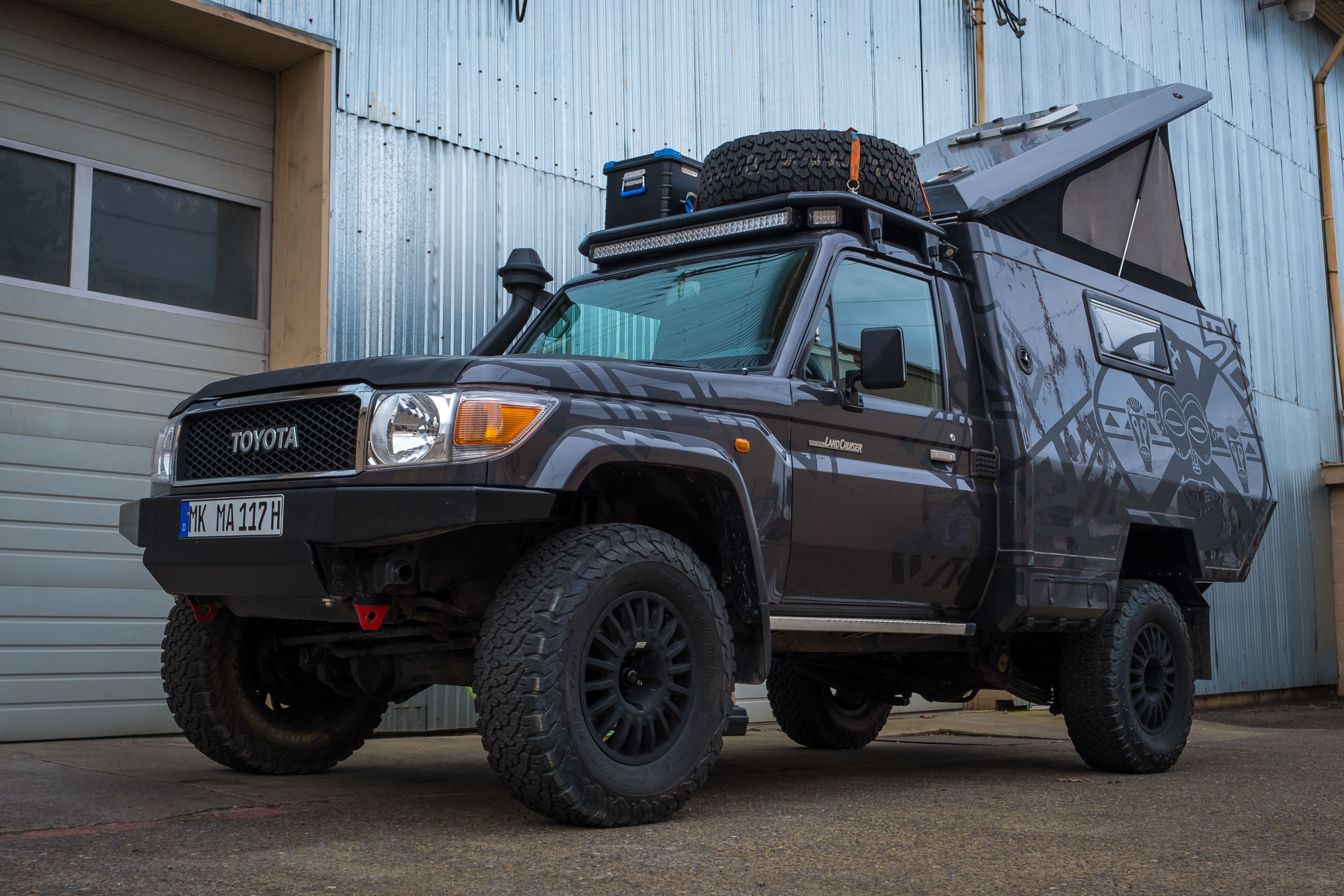
Since then, the German manufacturer has delivered 388 expedition vehicles to nearly every corner of the globe, and expanded to a staff of 14 experienced mechanics and craftsmen. Each of their trucks is built to order using the best products available with strict attention to detail. They use modern construction methods developed over the last decade, proven through excruciating tests in real-world conditions.
Driving a Maltec
Most built overland trucks have a certain feeling to them. If I had to describe it in a word, I’d call it encumbered. The weight of armor, fuel, supplies, and camping equipment lugged around by a lethargic motor on top of an under-sprung suspension results in a driving experience ridden with body roll, painful acceleration, and difficult braking. Given that this has been my experience with so many borrowed vehicles, I had guessed the Maltec, with a full camper body molded to it, would certainly be the same.
I couldn’t have been more wrong.
From the moment I left Portland’s highways and found the twisting backroads of the surrounding country, this spry camper showed me its true nature. It tore around the bends with a flat and even composure, sticking me in the Scheel-Mann seats and plastering a grin on my face. The 1HD-T 4.2-liter turbo-diesel purred and then growled as I downshifted and accelerated through the corners, and the fresh Toyota 5-speed transmission felt crisp as I changed through the gears. It was like somebody disguised an 80’s Toyota coupe as an overland truck. There was definitely no blinding acceleration, but there was plenty of nimble, electronics-free, manual transmission fun to be had, and I was loving it.

For those wondering about my claims, Maltec isn’t using strange black magic to make their trucks handle like a dream; it simply comes down to weight, or rather, the lack of it. Their camper shells are made from carbon fiber, and clock in at just 180 pounds when empty. The cabinets, hardware, and accessories are also designed to be both light and strong, with additional weight reductions being made wherever possible.
Take the hood, for example. The one on this 70 Series was carbon fiber, a change which I scoffed at in the beginning. Then I spent nearly a month lifting an original hood up every day while checking the oil on a new 76 in Australia and realized just how heavy the darn things are. It’s one of the many examples of changes Maltec made based on their real-world experience with these vehicles.
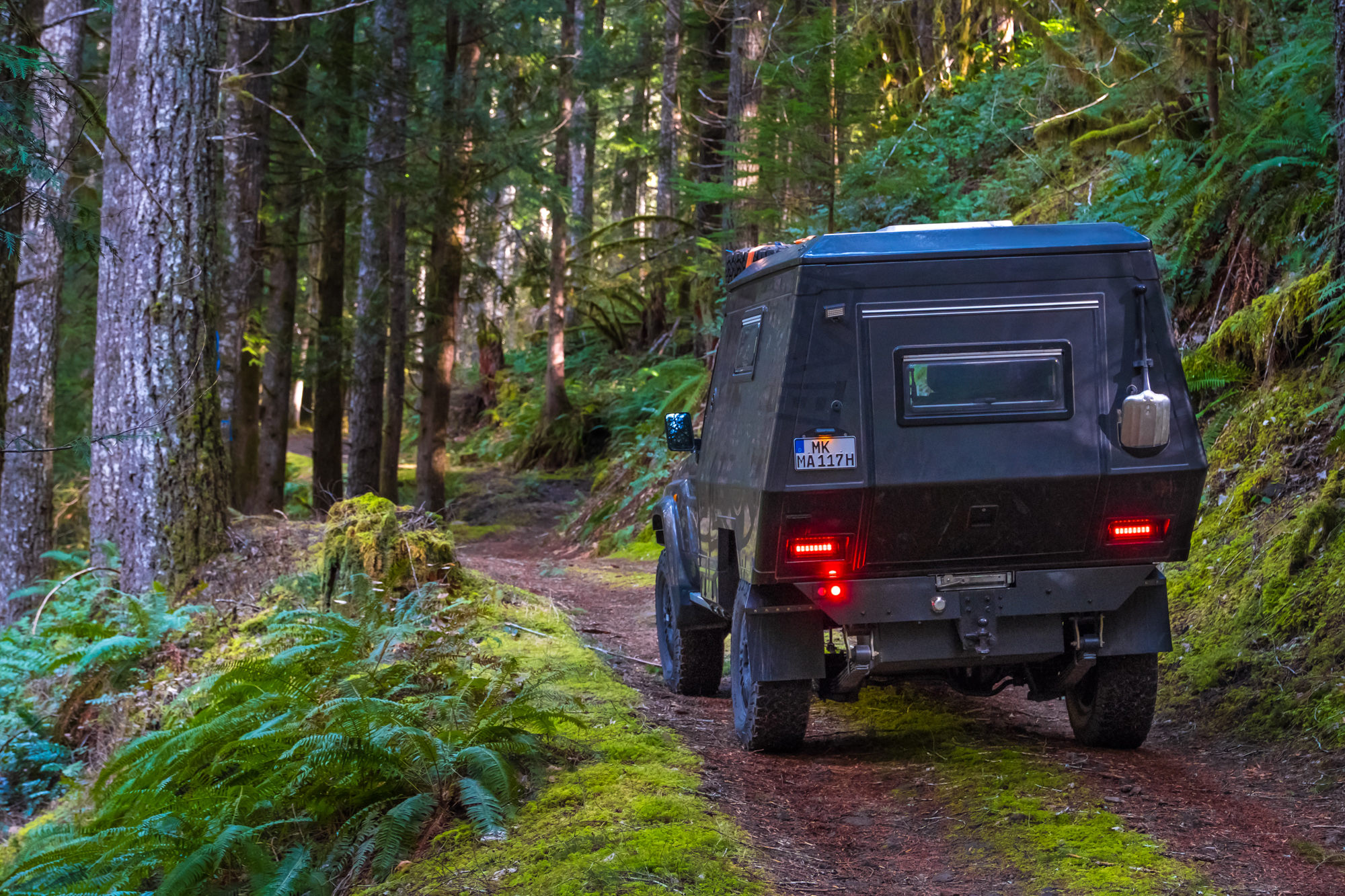
When we finally reached the dirt, I found the Eibach and Parabolic springs to be well suited to the washboards and embedded rocks of the trail. It handled smoothly without any harsh vibrations or impacts, and to my great satisfaction, there were no rattles in the camper. The overhauled power steering system, larger tires, and of course Scheel-Mann seats kept driver fatigue low on the bumpy back roads, and we found ourselves continually driving further than we had planned.

Tight trails through the woods were my biggest concern for this truck. You can generally make up for a camper’s size through clearance on technical terrain, but tight confines are inescapable. As expected, the Maltec box definitely gave us another factor to think about when cutting sharp corners and maneuvering through dense trees, but it was actually quite nimble overall. In fact, thanks to the low profile of the pop-top and sides, I never found myself in a situation where I couldn’t go where I wanted. All I had to do was keep an eye on the camper’s edge, which was easy, because that’s all you could see in the woefully undersized Land Cruiser mirrors anyway.
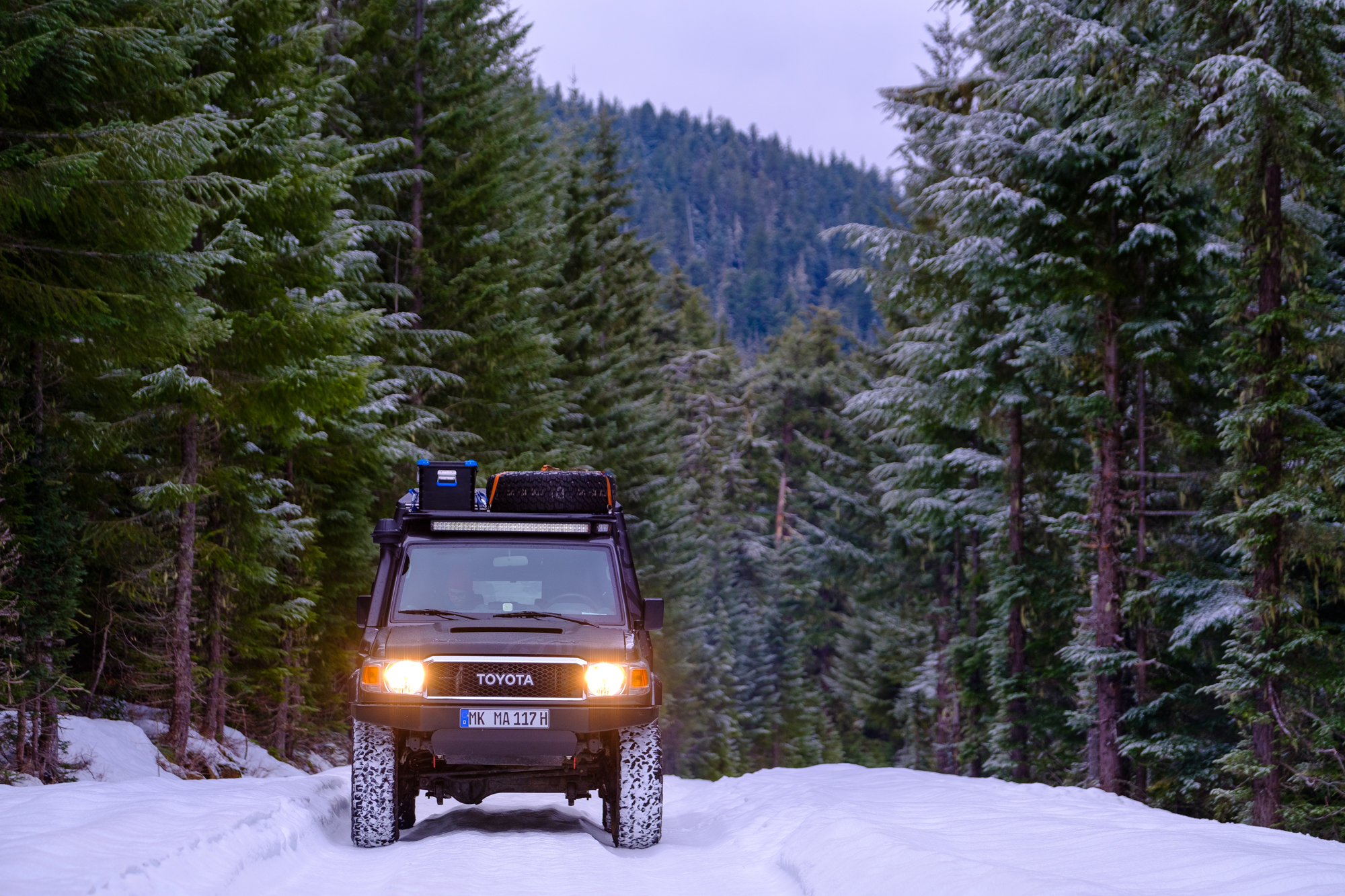
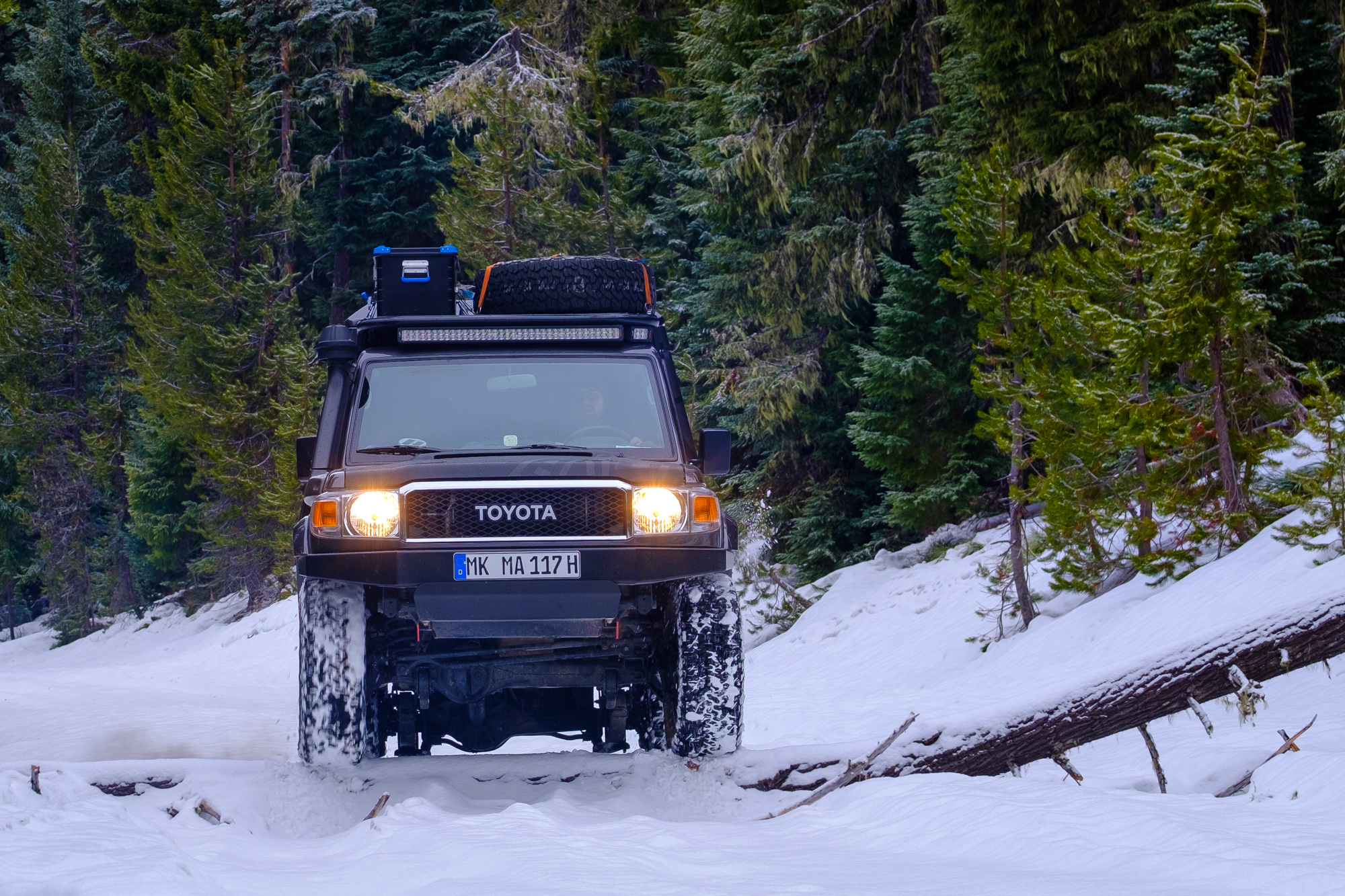
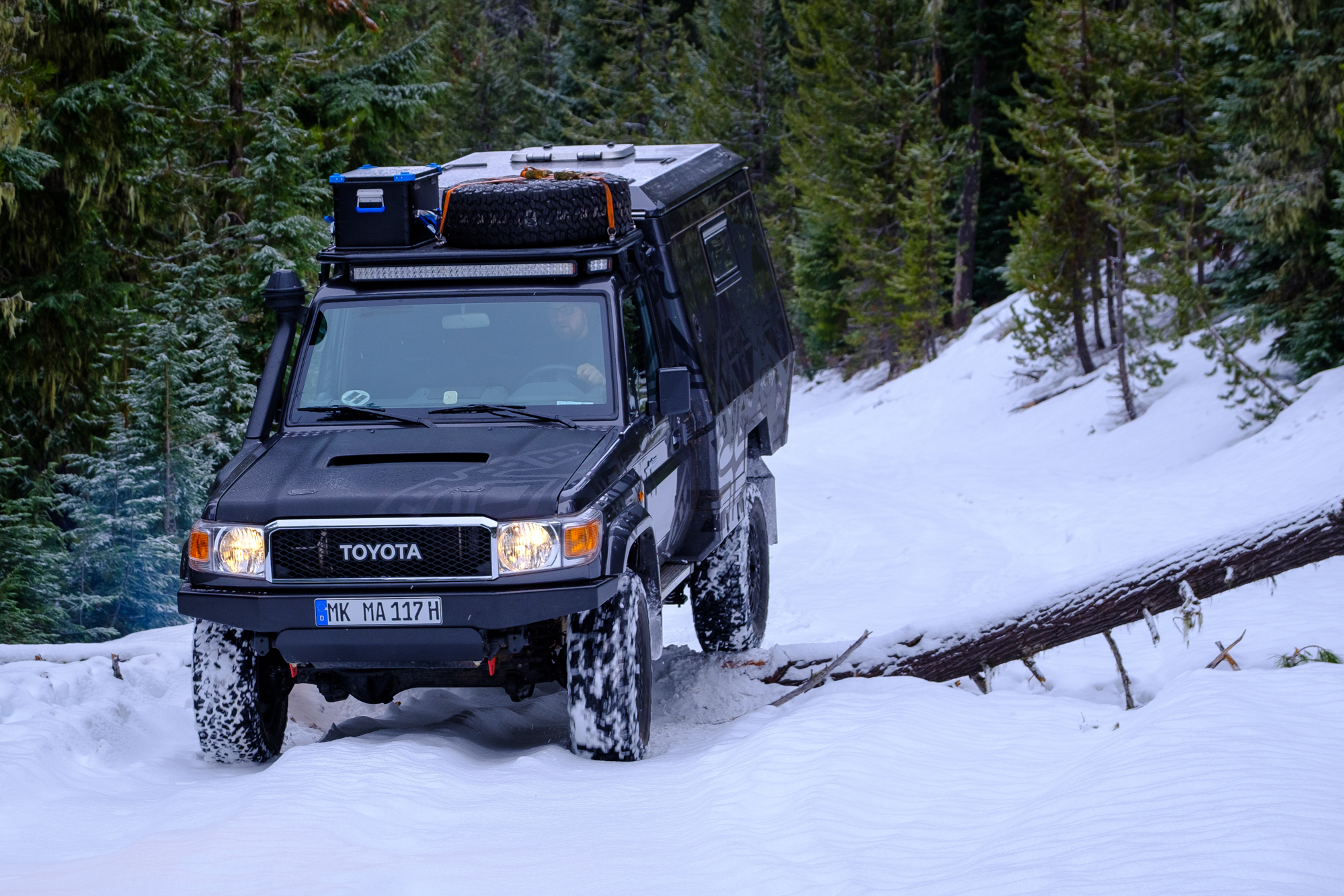
In technical terrain, the truck was more than competent. With the lift, larger tires, and a little left-foot braking it would crawl through almost anything you asked it to. The gearing was perfectly matched to the vehicle, with enough torque to continue moving over obstacles with a little clutch and power intervention. This made for an extremely relaxing trail experience, even for newcomers to the world of manual transmissions off-road.
Its only struggle was in cross-axle moguls due to the limited suspension travel in the rear. Thankfully, Maltec made sure the base truck had factory front and rear differential locks, which made quick and easy work of anything we encountered.
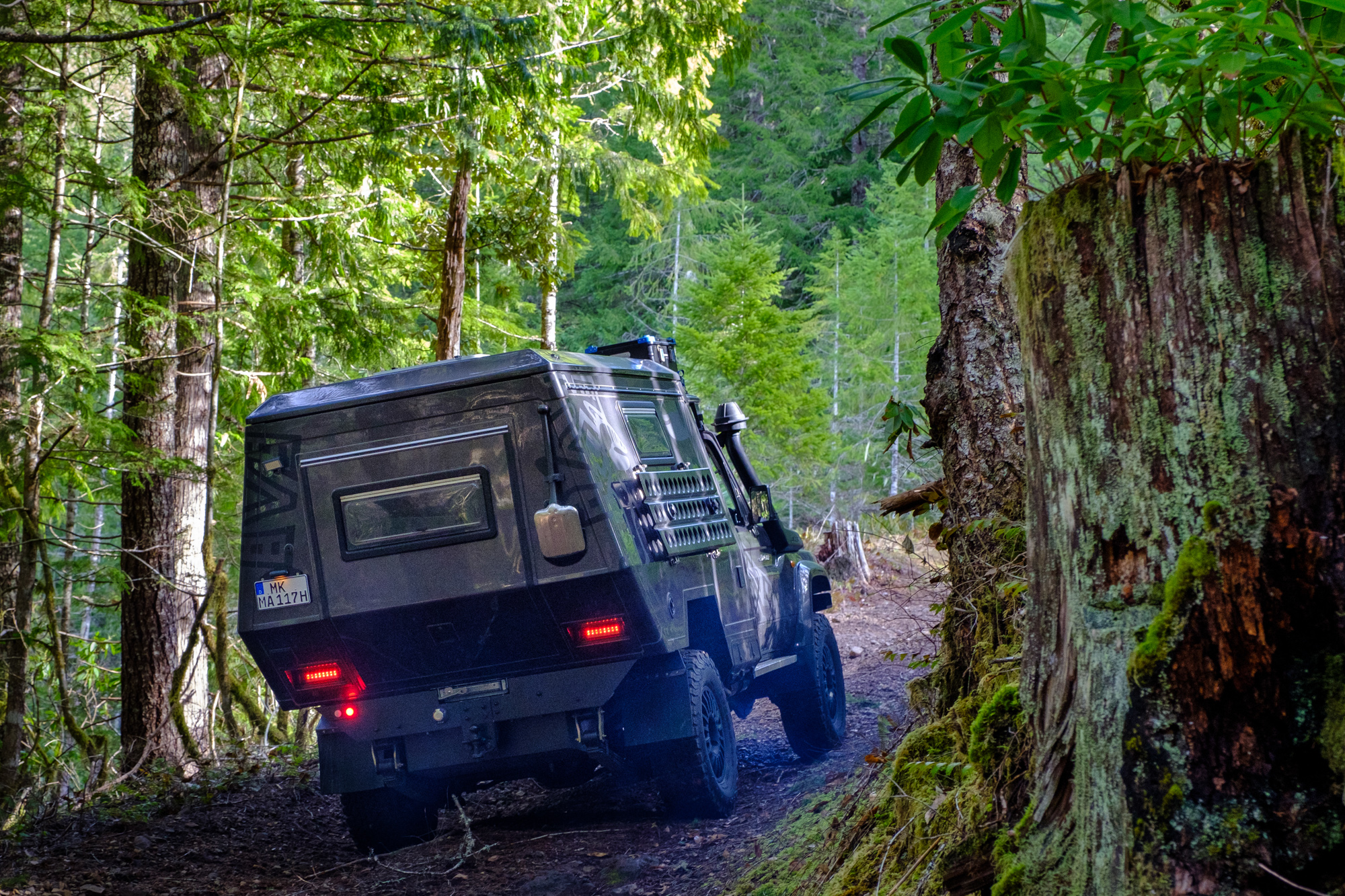
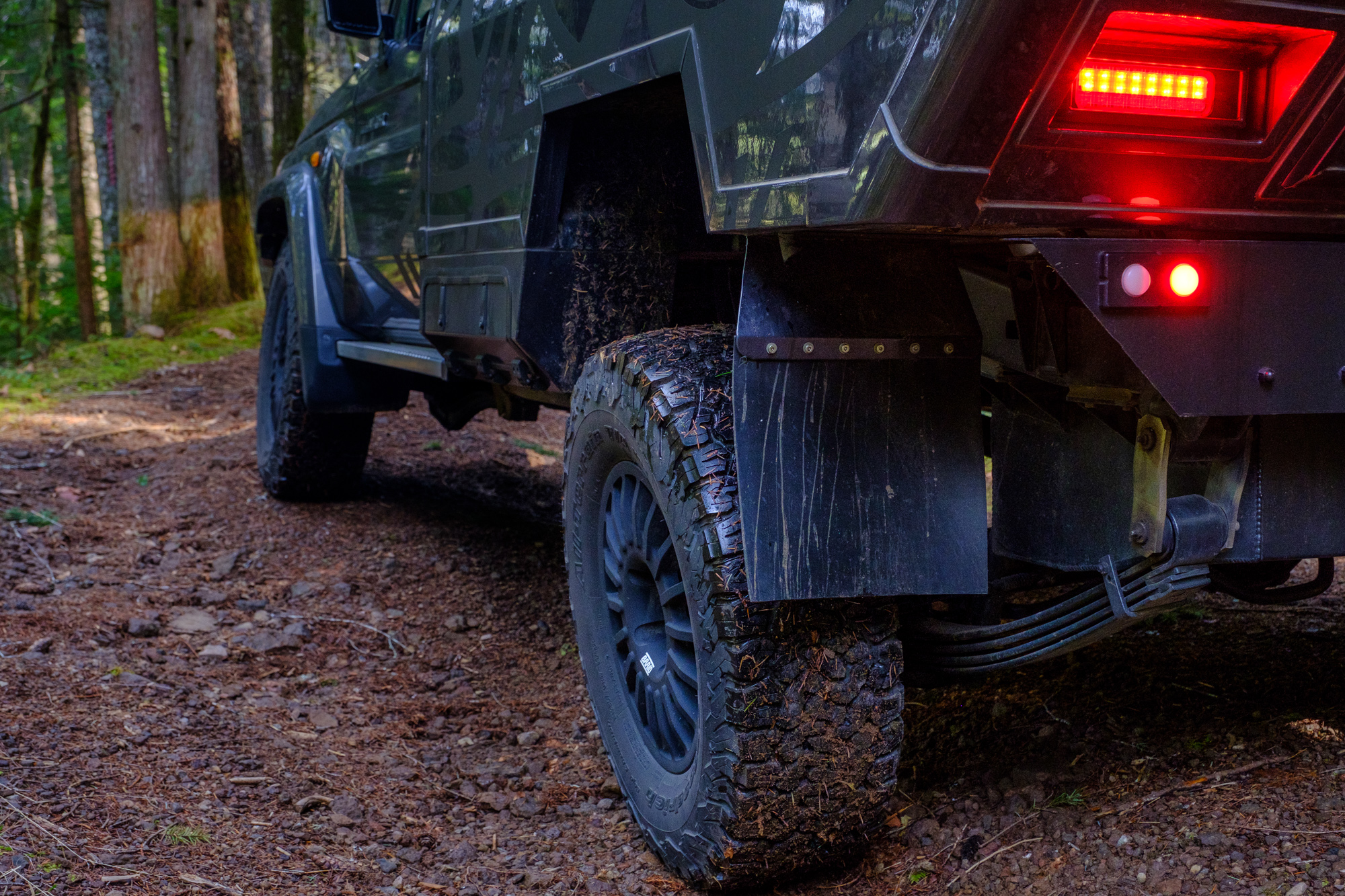

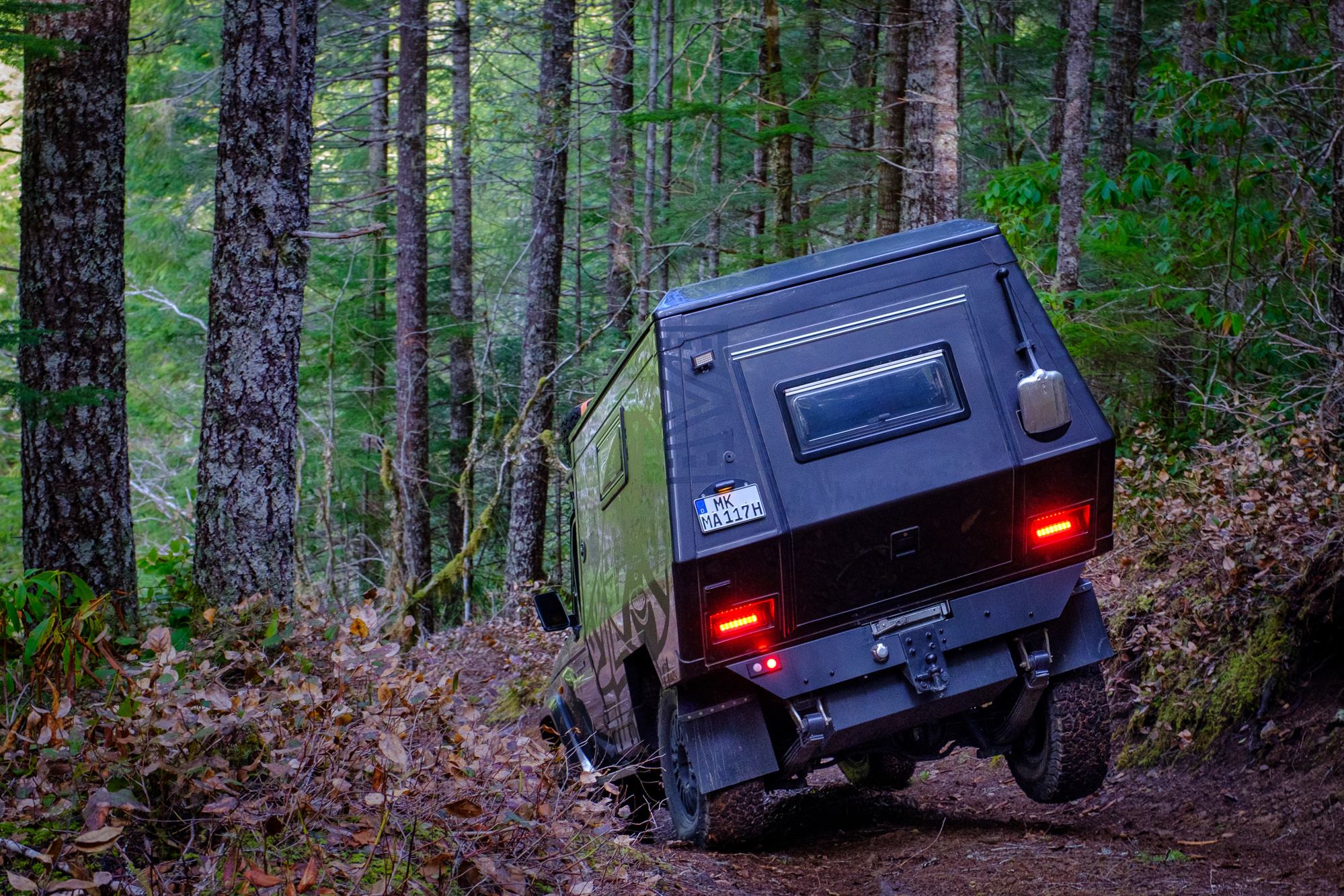
By all counts, this 70 Series was capable as an off-road vehicle, but you’re not buying a Maltec just because it’s a good four-wheel drive. If that’s all you wanted, you could buy a Jeep Rubicon. You’re buying a truck like this because you want a comfortable, useable, LIVING space on the road, and that’s where this camper truly shines.
Living in a Maltec
Using a Maltec in day-to-day life makes you wonder why the hell you’ve been putting up with anything different for so long. It gives you everything you’d want in an overland truck with very little sacrifice, but let’s get something out of the way right now. If you need a washer, dryer, shower, and places to hang your Instagram succulents, this isn’t your truck. It’s not designed to be a luxury condo, but an effective travel rig, with light and space-efficient adornments. So with that in mind, let’s dive in.
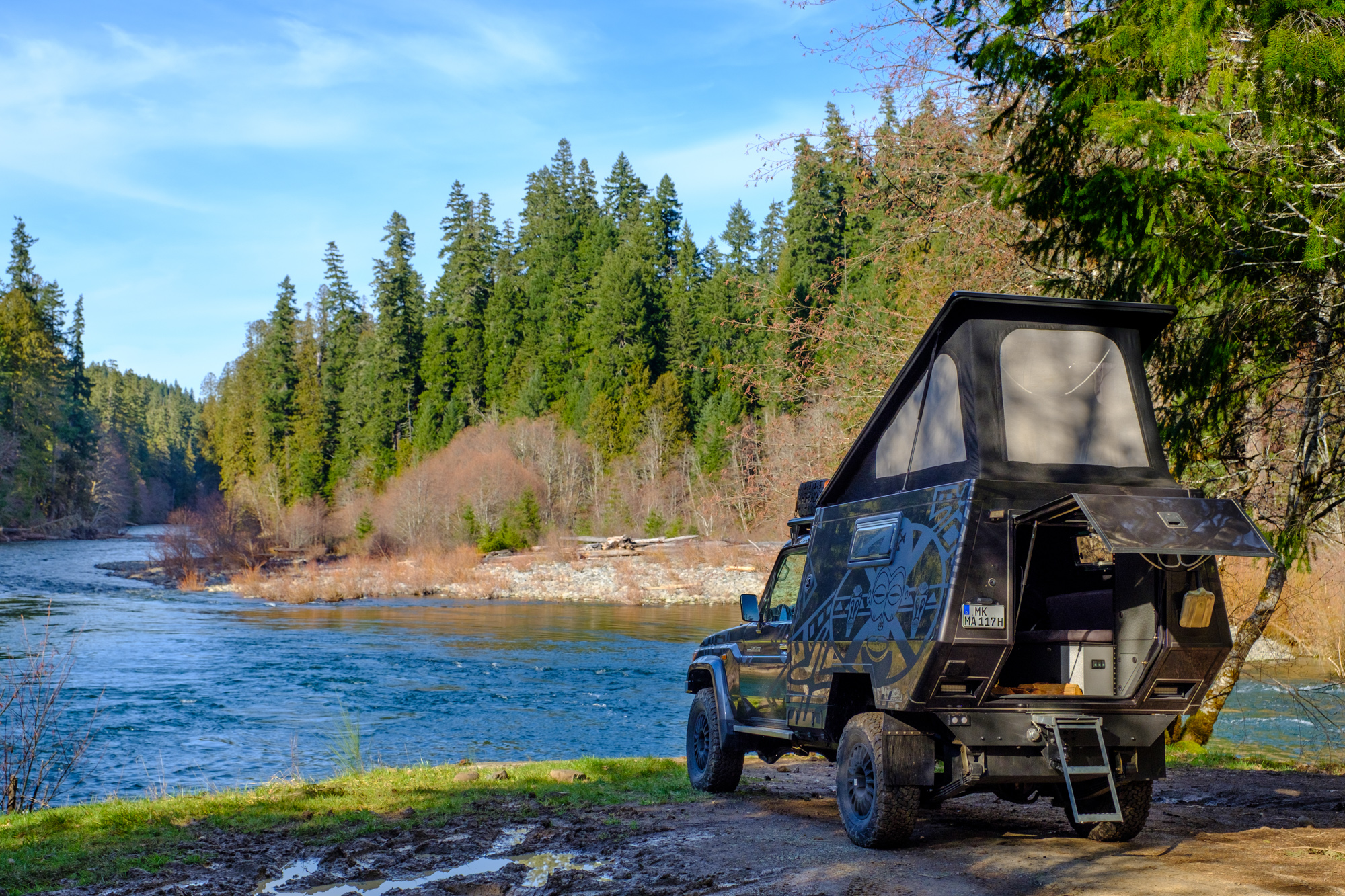
The basis for the Maltec camper is their lightweight expedition cabin which measures in at 8.36 x 6.2 x 4.75 feet. Once you pop the roof, that meager 4.75 feet turns into a cavernous space for changing, cooking, and moving around. Up top, you’ll find a comfortable mattress tucked into the roof, which rests easily on supports built into the top of the shell. This enables you to sleep four people in the truck or let someone take a nap upstairs, while someone else prepares food or works downstairs. Albeit with slightly cramped headspace.
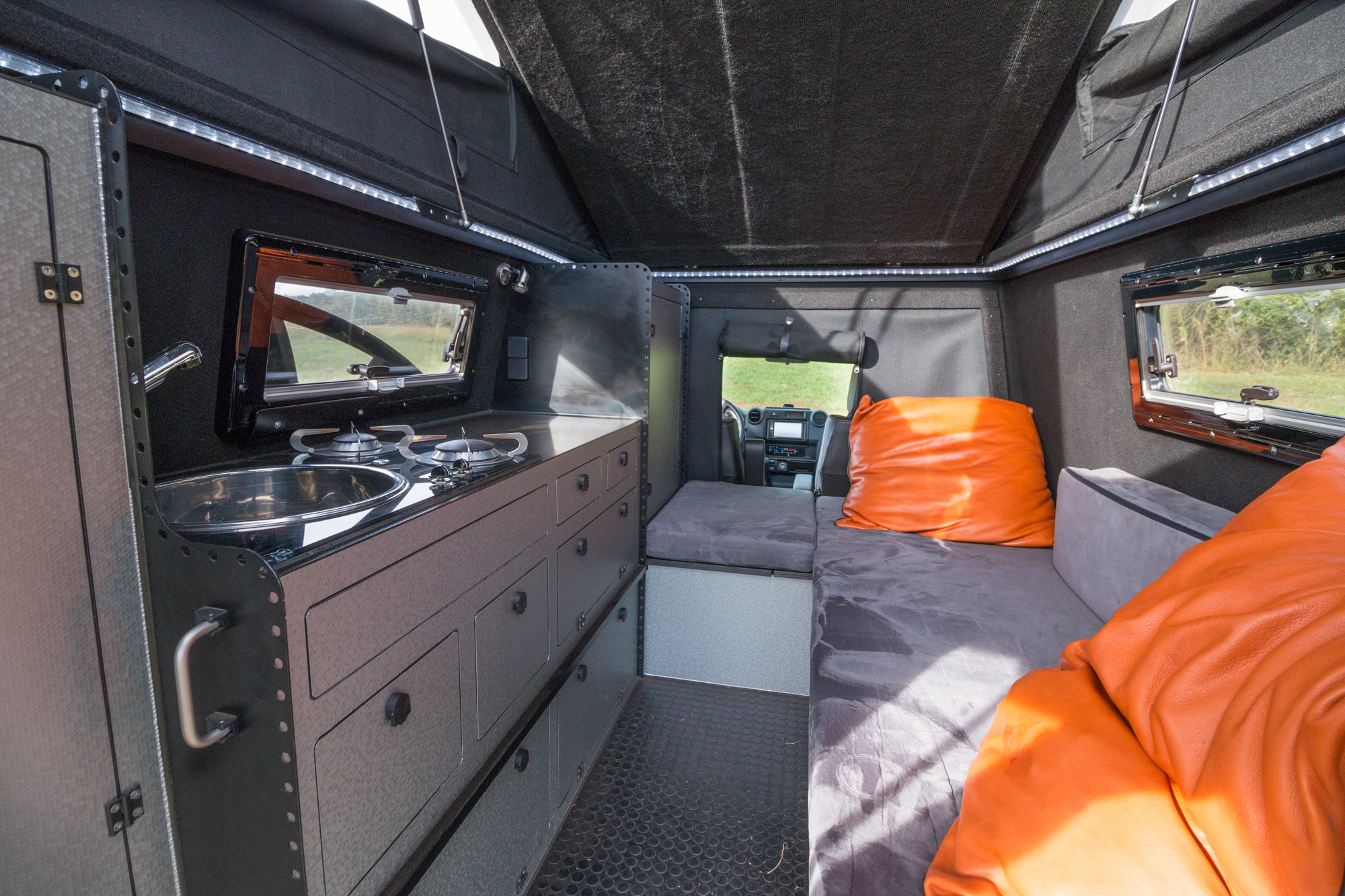
We found that in warmer temperatures the upstairs cabin with its wide mesh windows was favorable for sleeping. The bed was of a generous size even for my 6’4″ frame, and the clear top hatch that allows you to see the stars above you was a fabulous touch. In the colder weather we encountered around Mount Hood, we preferred to convert the downstairs sofa to a full bed and sleep there. The additional insulation and sound deadening were nice, and if the winds got really high or the temperatures became extremely low, we could lower the roof and turn on the heater to completely seclude ourselves from the surrounding storms. This ability to sleep with the roof down also makes the Maltec ideal for stealth camping, a reality that most overlanders will eventually face.
The only trouble with the sleeping setup was reaching the upper bed. You have to crawl up a small space at the rear of the cabin, and I can only imagine that the designer was a rock climber, gymnast, or contortionist, as you must be one of the three to enjoy the process.

Thankfully, you don’t need to be a former Cirque du Soleil performer to utilize the abundant storage. In fact, it’s second nature. Everything has been designed for organization and ease of use, so it feels a lot like living in your own home. Need a space for your camera gear, clothes, or dog food? Try the cubbies under the couch. What about snowshoes, climbing gear, and coats? Tuck them into the large cabinet in the rear. Kitchen supplies? There are numerous padded drawers of all different shapes and sizes awaiting your kit. Everything is compartmentalized so that you can find what you need quickly, instead of digging around through piles of stuff. Then if you still have odds and ends that need a home, there’s always the roof-rack!
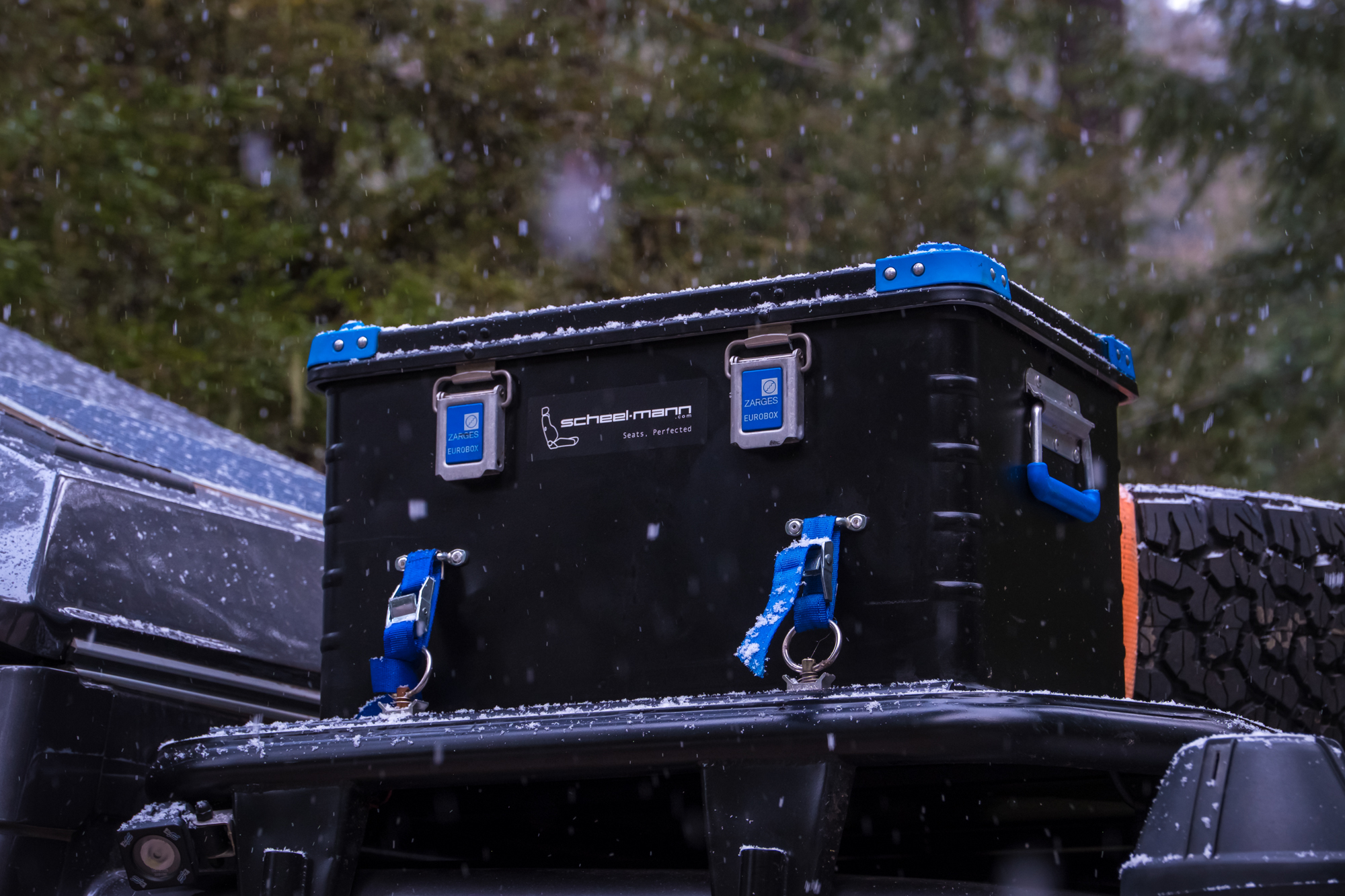
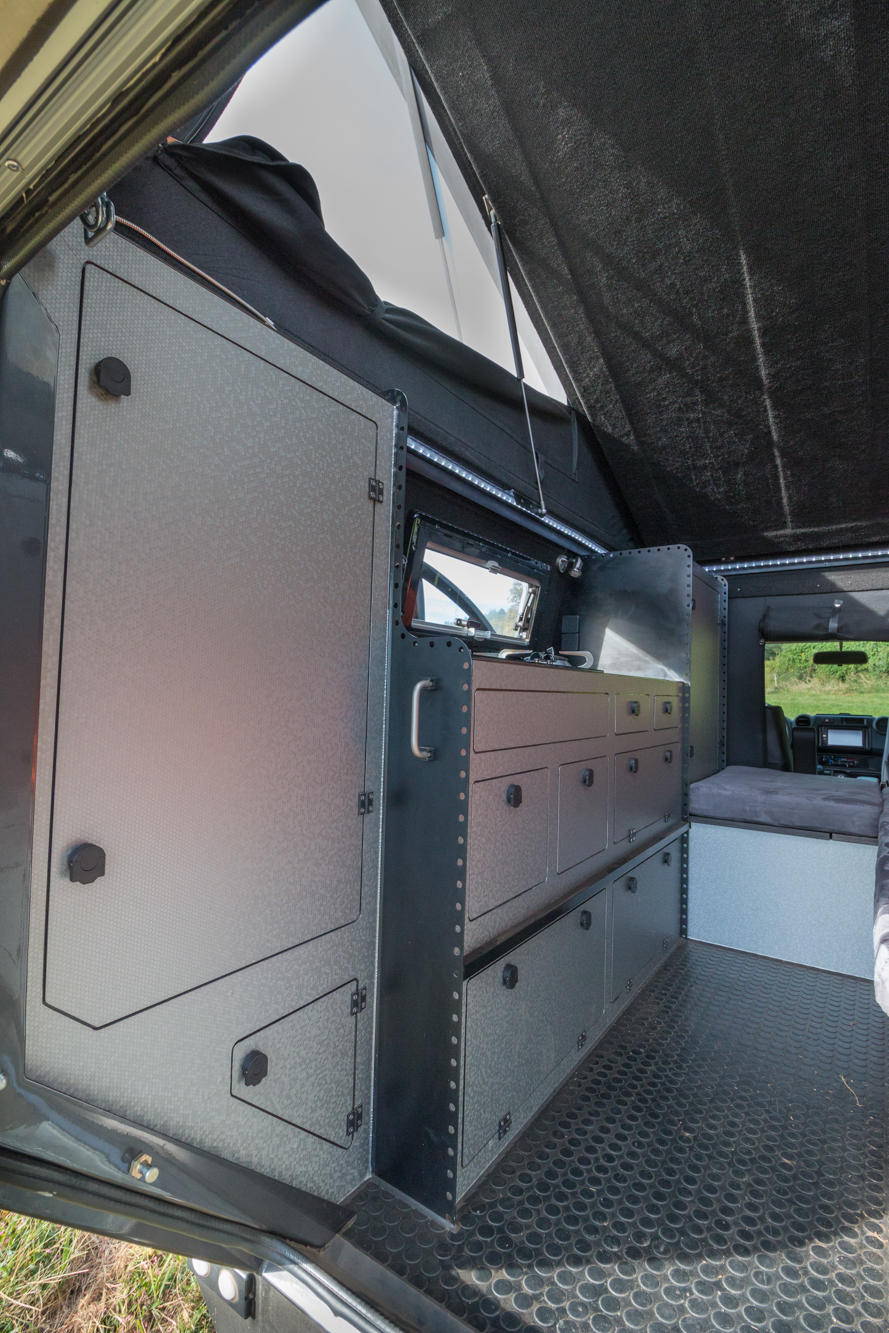

Now you’d think that with all this storage space, quarters would be well, cramped, but it’s not so. Maltec has elevated space efficiency to an art form, tucking drawers and cabinets into each nook and cranny, and giving nearly everything a dual purpose. The throw pillows, for example, aren’t just for a splash of color or to support your back. They’re actually clever containers for your sleeping bags and blankets. Then there are the sand ladders mounted to the exterior of the truck. These can be dropped down with two quick release tabs, and they become your external table for gear prep or cooking.
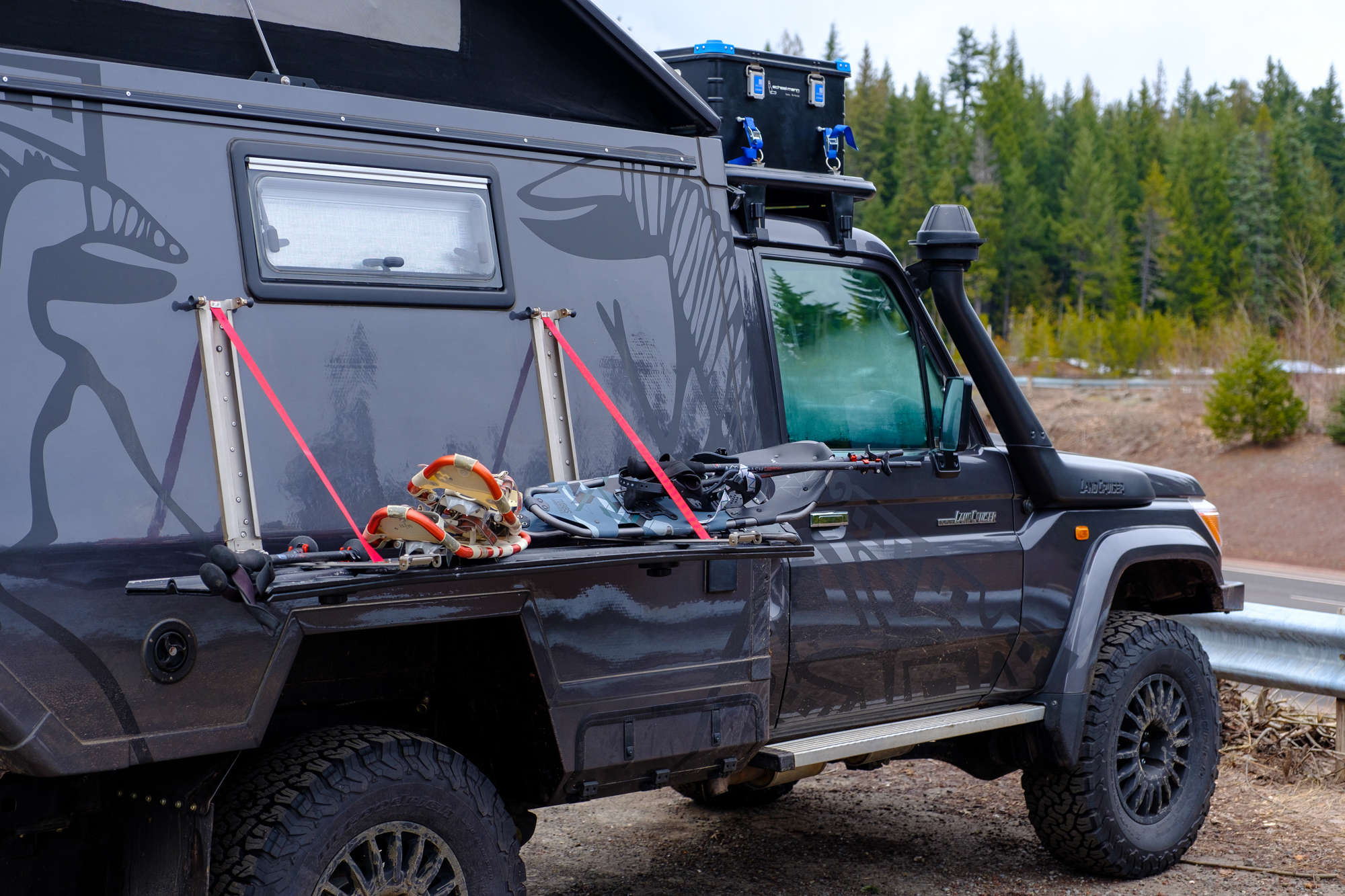
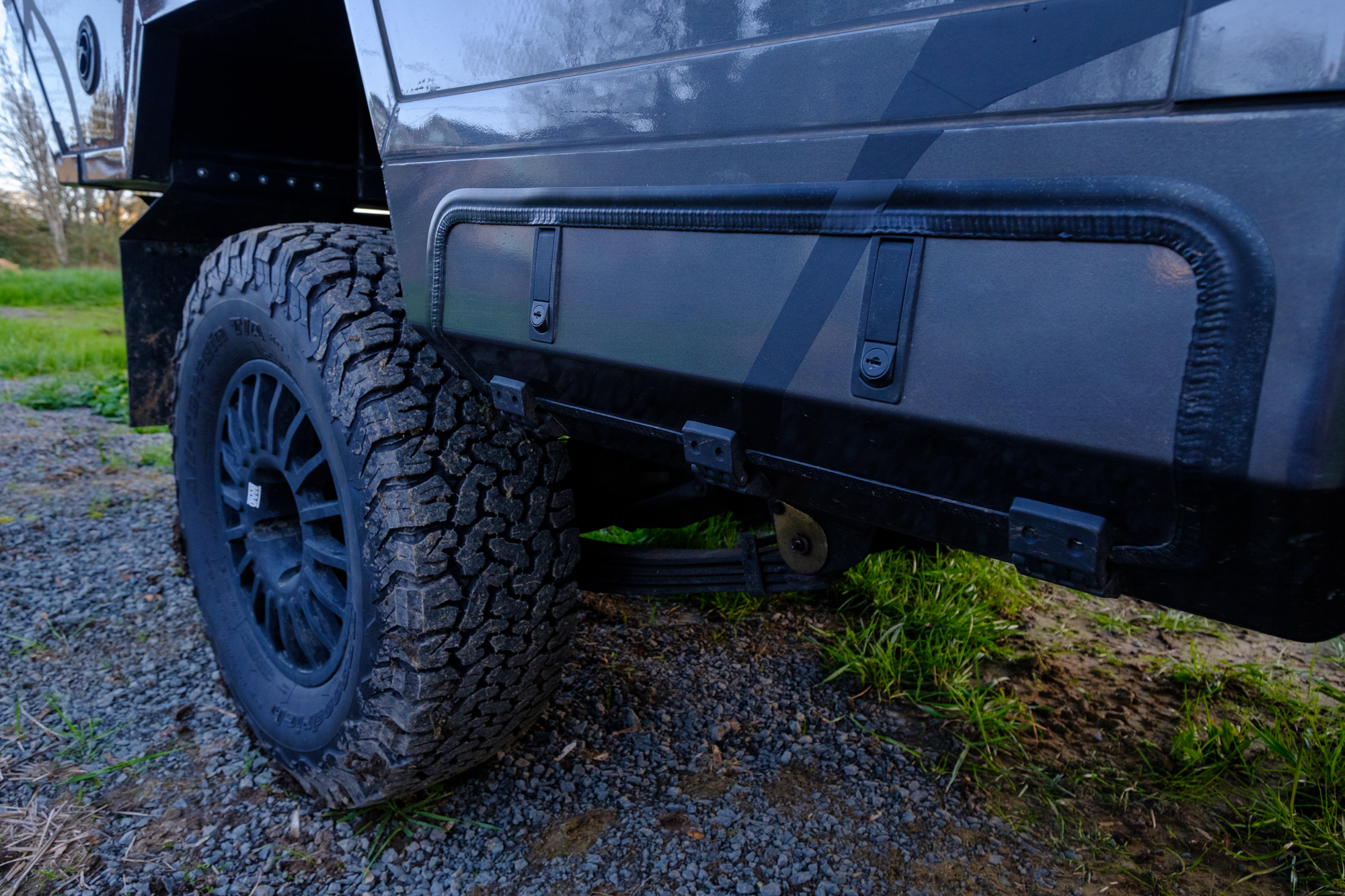
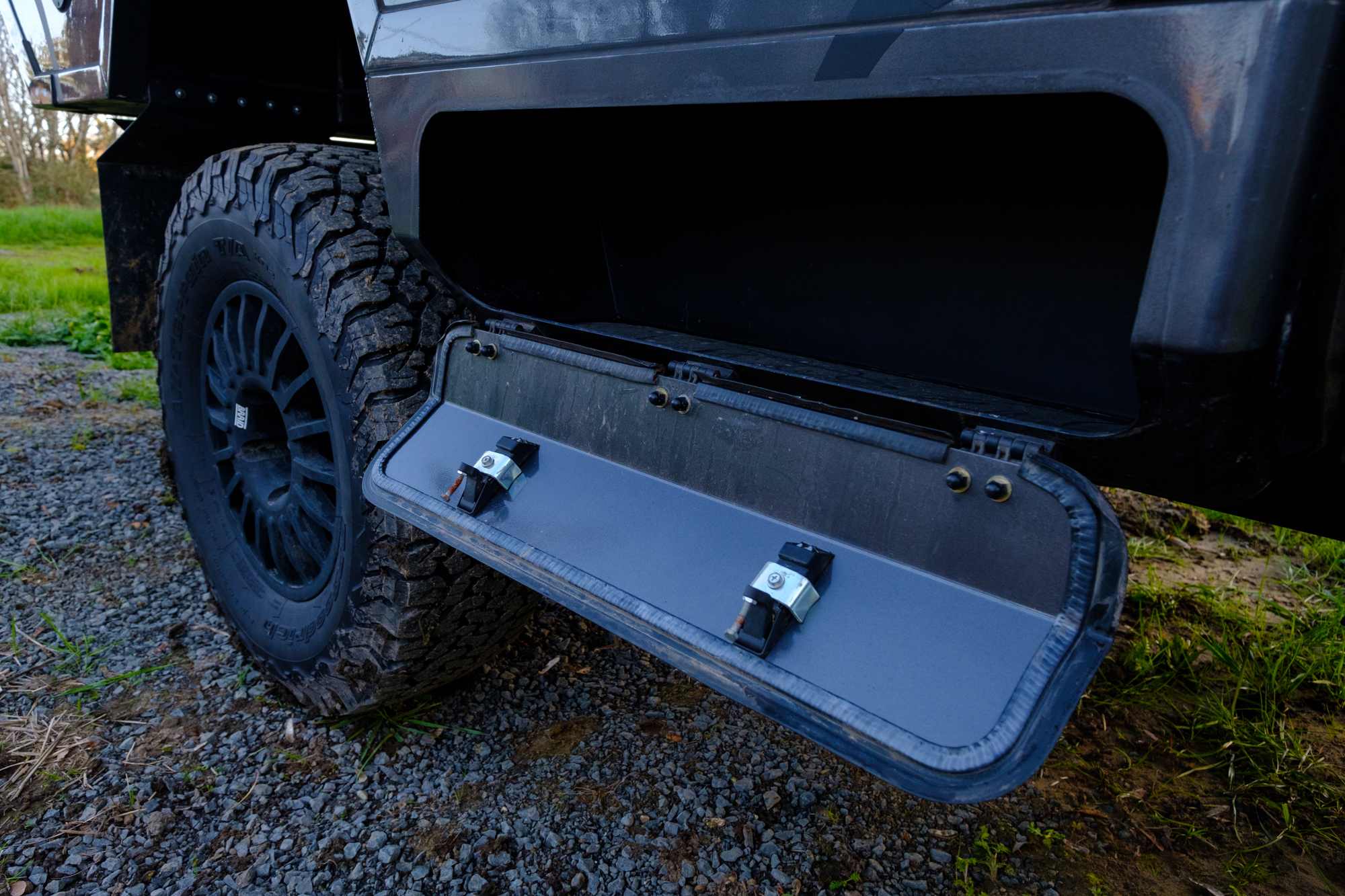
This design mentality means that in a truck that is no bigger than your average 4×4, you have enough room to perform your everyday house tasks comfortably. Take cooking, for example. The counter space is sufficient for preparing meals for two, and the integrated stove has enough surface area for most pots and pans, a wok being the possible exception. Once your meal is finished, the sink with instant hot water will help you to clean things up in short order. Meanwhile, your adventure partner can take advantage of the sofa and lounge space while reading a book, or catching up on the plans for the next day.
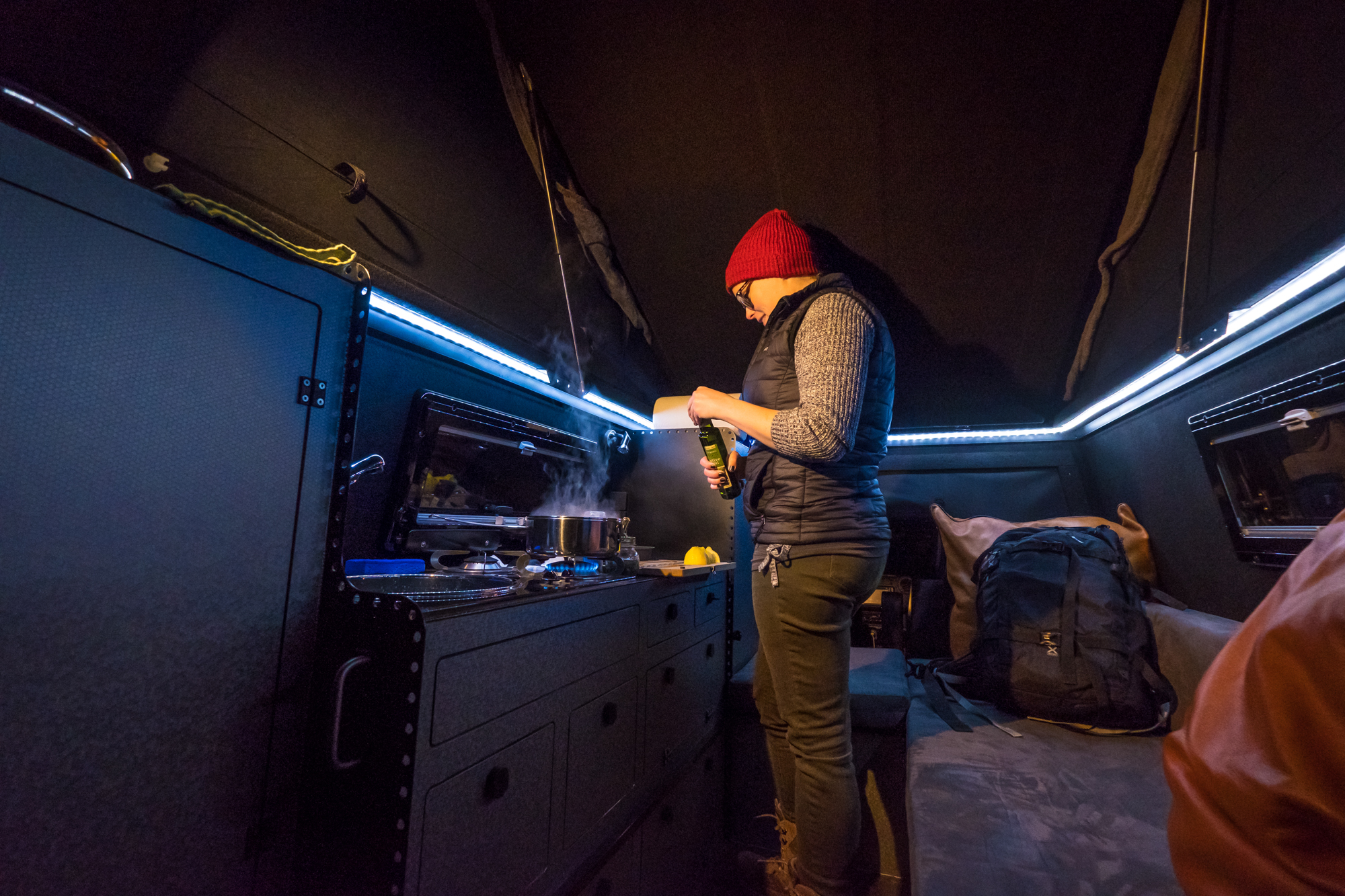
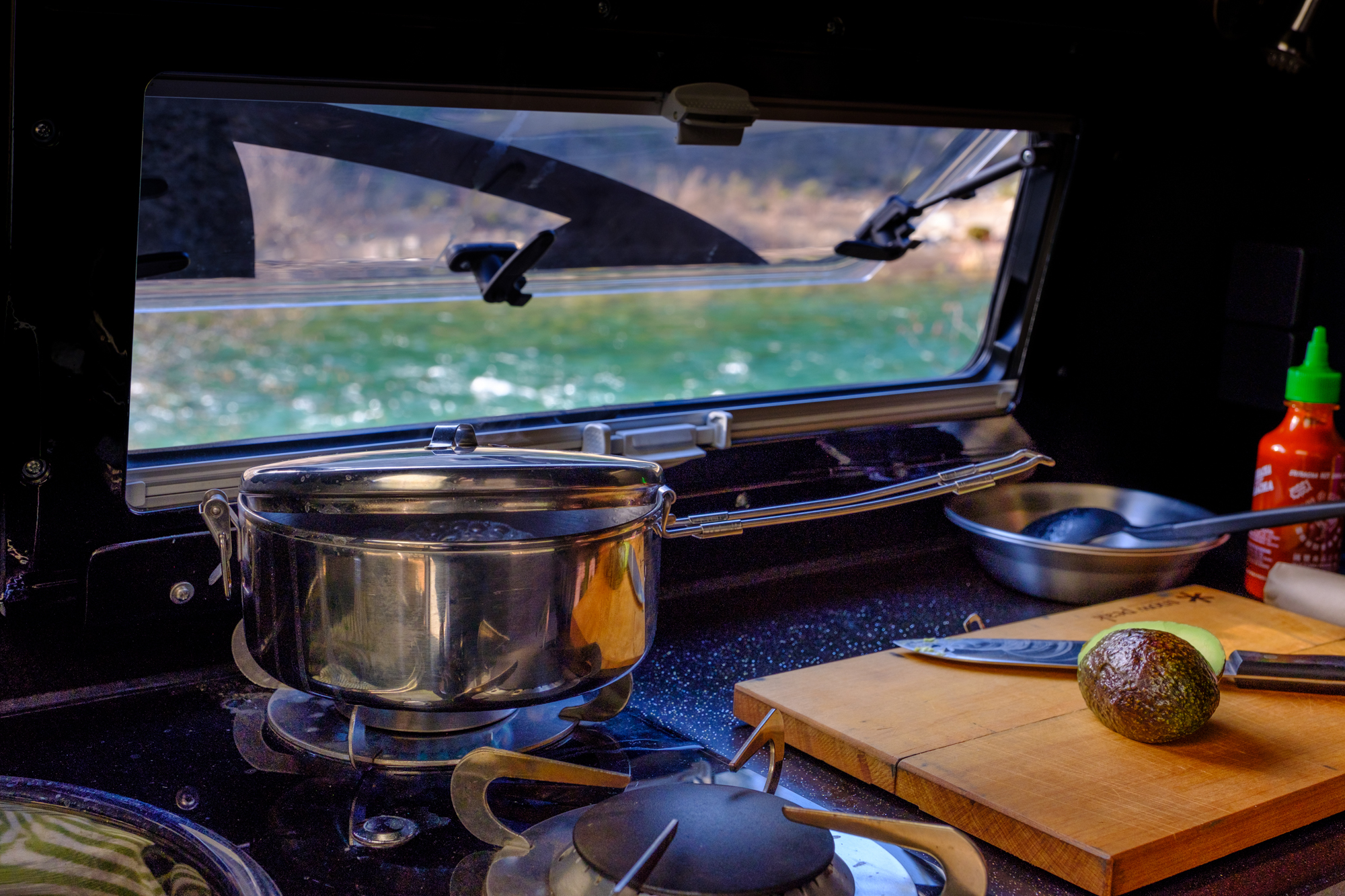
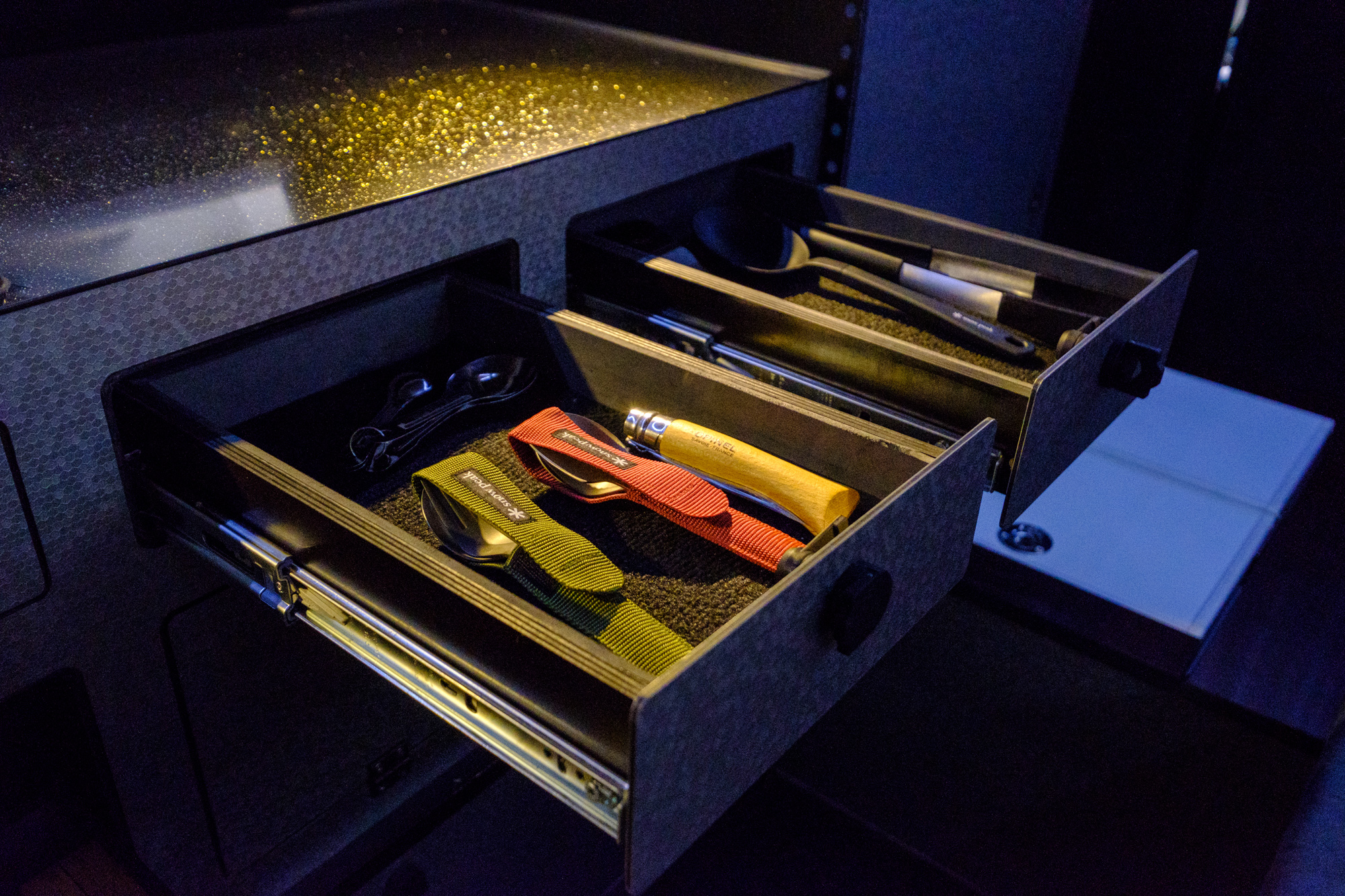
There is one flaw on the interior though, and in my opinion, it’s a massive one: the lack of a table. This not only makes eating your meals a bit cumbersome, but almost entirely dashes any hope of using the truck as a mobile office. Adding some sort of table would have been extremely easy, and any logic behind not doing so escapes me.
Final Thoughts
Over the years, I’ve had the pleasure of testing a lot of amazing vehicles. I’ve spent countless nights in trucks, SUVs, campers, and trailers of every shape and size, yet there are few, if any, that I can look back on as fondly as I do the Maltec. It takes all of the comforts we love in large overland trucks and combines them with the maneuverability of a traditional four-wheel drive. You can park it in a parallel space in the city, use it as a daily driver, tackle a difficult trail, and still comfortably live inside it while traveling anywhere in the world. It is everything an overland truck should be, and despite all concerns for my pocketbook, I have fallen in love with it, and I can guarantee you will too.
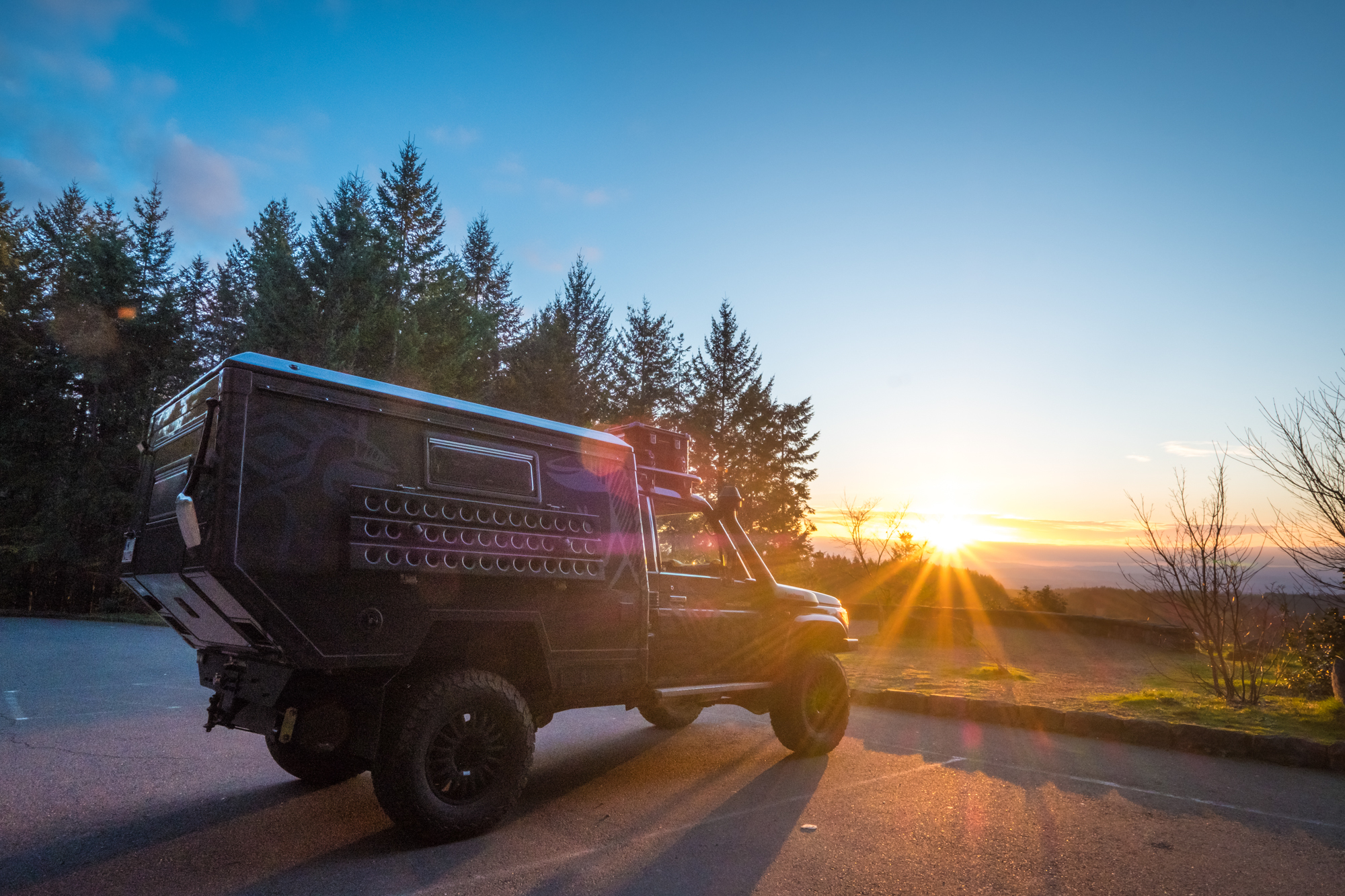
Specifications
- Toyota BJ75, model year 1988
- Face lift to 2014 spec sheet metal
- Color: Toyota 1G3 (dark gray metallic)
- Single cab pickup with carbon fiber expedition cabin
- Toyota 1HD-T 4.2l direct-injection turbo-diesel
- High output injectors and performance injection pump
- Optimized TurboCharger
- Toyota 5-speed transmission
- Center, front, and rear axle locks
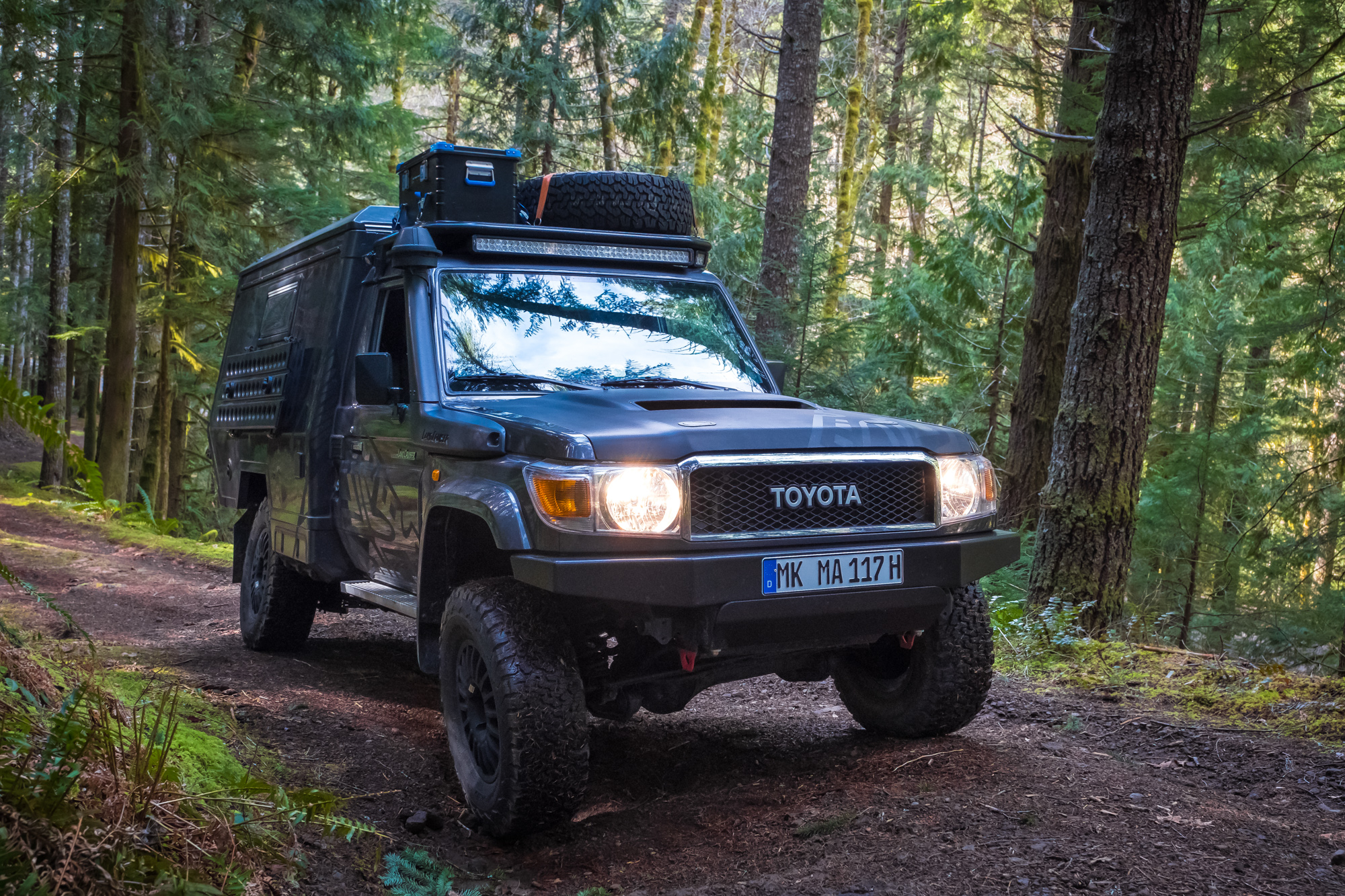
Chassis
- Ridge axles, front and rear
- Coil spring front (Eibach) 55-millimeter lift
- Leaf springs, rear (Parabolic) 75-millimeter lift
- Koni heavy track raid shocks
- Disk brakes, front and rear
- Braid Winrace wheels
- BFG AT 285/75R17 tires
- Front bumper Maltec-alufront (black powder coated)
- Heavy-duty skid-plate (black powder coated)
- Aluminum supplementary diesel tank, 174 liters with 265-liter overall capacity
- Stainless steel exhaust-system/Maltec sidepipe
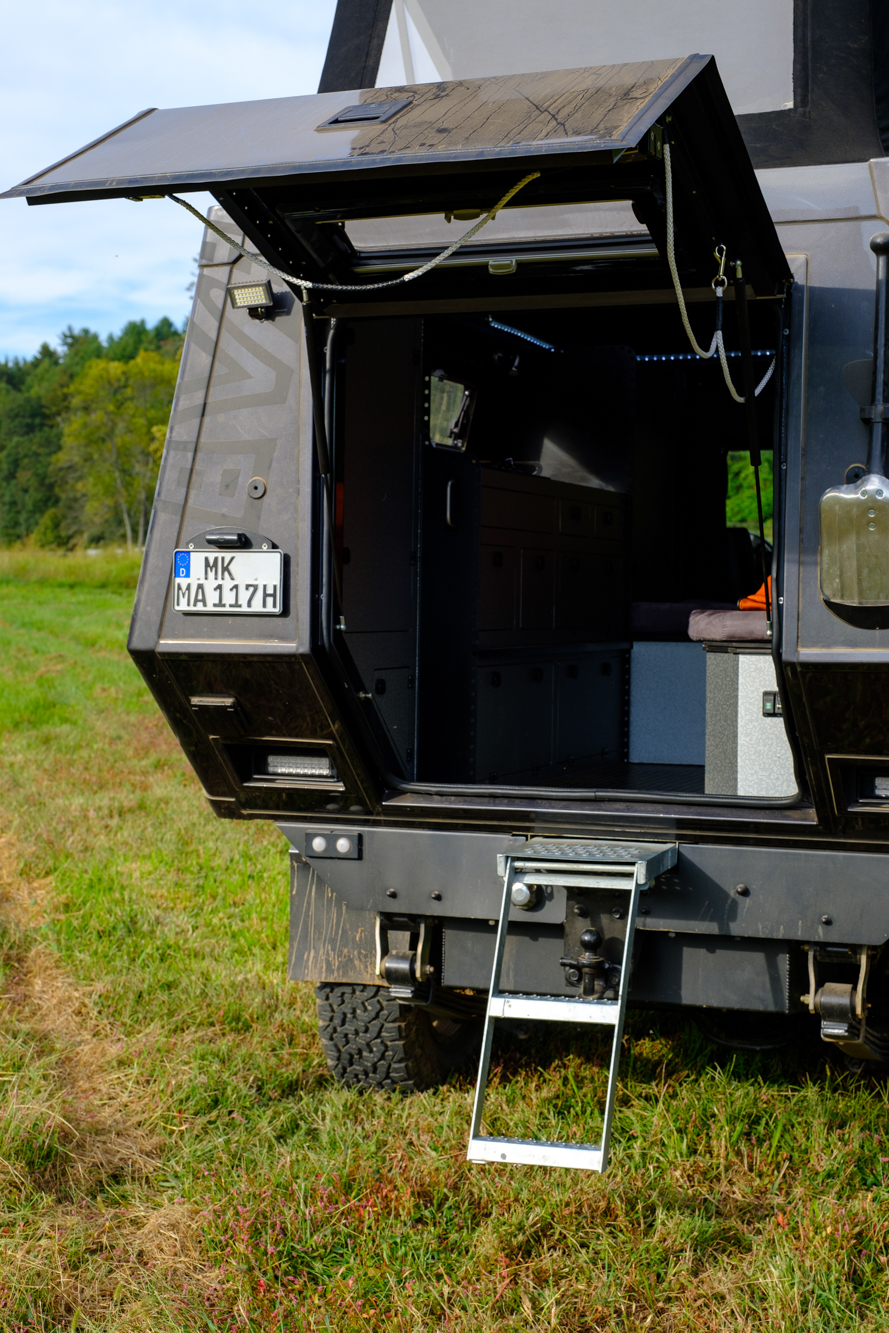
Body
- Updated 70 Series body with gray interior
- Airbag, passenger and co-passenger
- ABS brakes
- HiFi system with navigation, iPod, Bluetooth, MP3/DVD/7-inch screen/rear view-cam, etc.
- Scheel-Mann Vario F seats in S111 Black Leatherette with Alcantara cushions
- Carbon-fiber hood
- Roof rack with LED light bars
- Maltec explorer lightweight expedition cabin with pop-up roof
- Aludibond interior, kitchen block with double gas burner, sink with cold and warm water, fridge/freezer (35-liter volume)
- 220-volt Converter
- AGM battery system
- Warm-water boiler
- Webasto air heater
- Outside shower
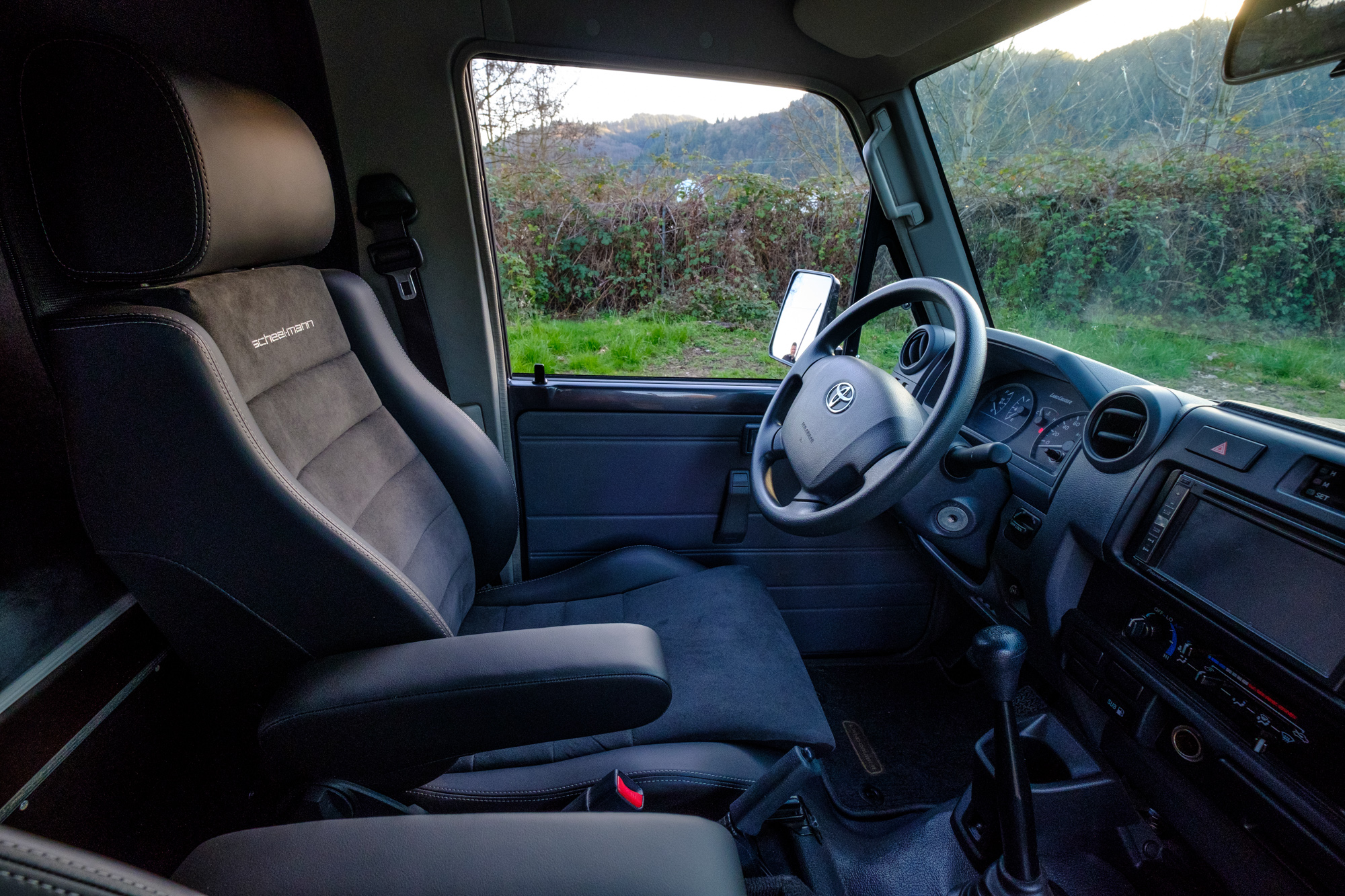
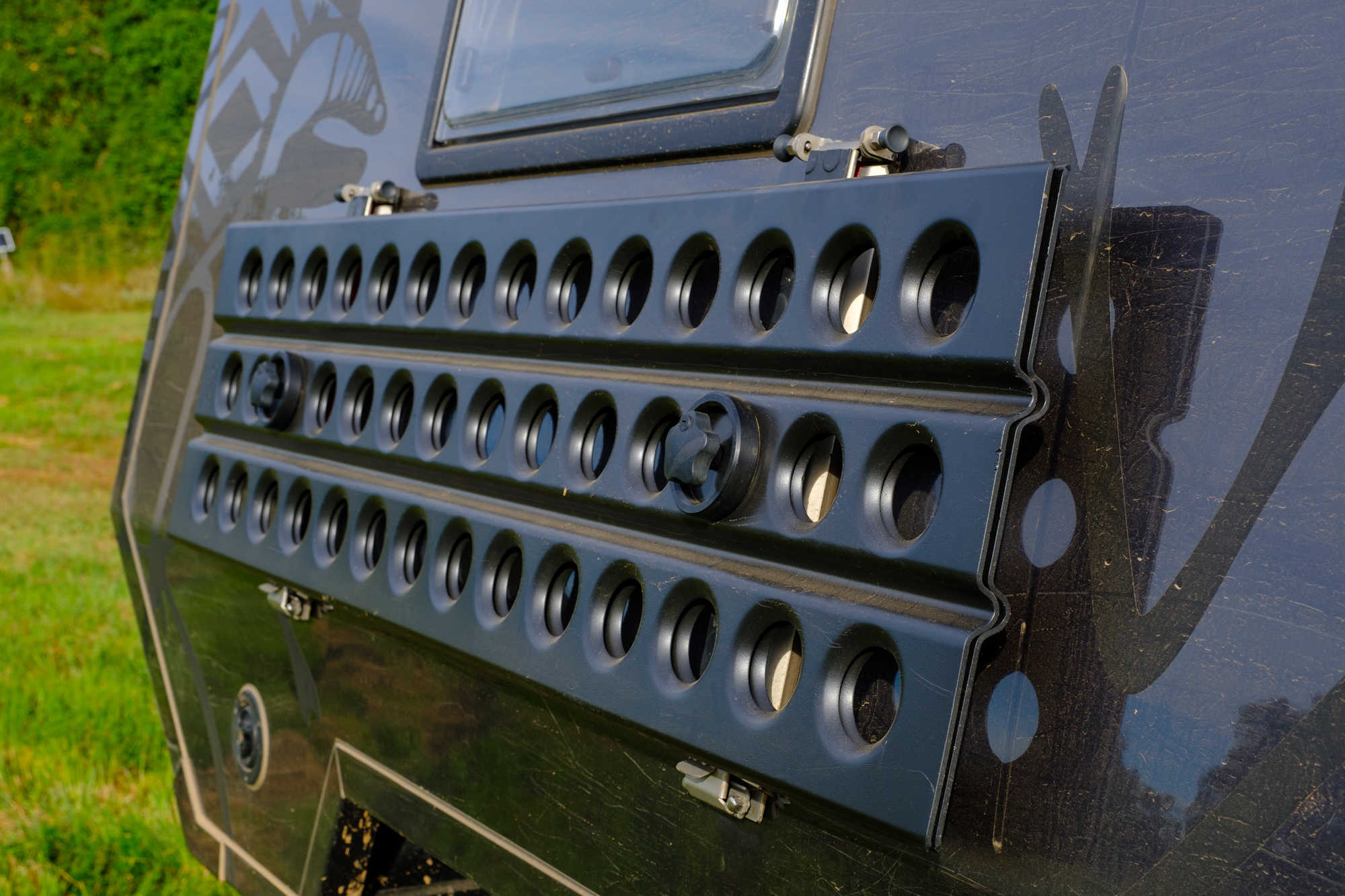





One Comment
Michael
November 26th, 2018 at 2:29 pmThat thing is a work of art! I wonder why they didn’t have a clip on detachable and stowable table though? I’ve seen that mod in a few of their larger builds based on the 80 series haunting online forums.
Regardless, an amazing product indeed. I’ve been hunting for a decent 80 series or a troopy lately to mod for a longer trip with a pop-top and custom storage solution, but this has me de-thinking that plan entirely!
Do you reckon that the Cummins r2.8 Repower would take this build over the top on the engine reliability front though?
Décisions decisions….